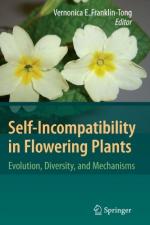|
This section contains 471 words (approx. 2 pages at 300 words per page) |

|
The failure of gametes from the same plant to form a viable embryo is known as self-incompatibility (SI). The process was initially studied in ornamental tobacco, where it was noticed that pollen grains that fell on the stigma of the same plant failed to grow down the style. However, the pollen could grow successfully down the style of other plants of the same species. In addition to tobacco, SI mechanisms have evolved in many diverse angiosperms families, with different families utilizing different proteins to accomplish the same goal. SI increases outcrossing and heterozygosity and prevents inbreeding.
SI systems operate prior to fertilization during interactions between the male gametophyte (pollen or pollen tube) and the female sporophytic tissue (pistil). Incompatibility can be achieved by prevention of pollen germination, retardation of the growth or disorientation of the pollen tube, or failure of nuclear fusion. These processes are usually controlled by...
|
This section contains 471 words (approx. 2 pages at 300 words per page) |

|


